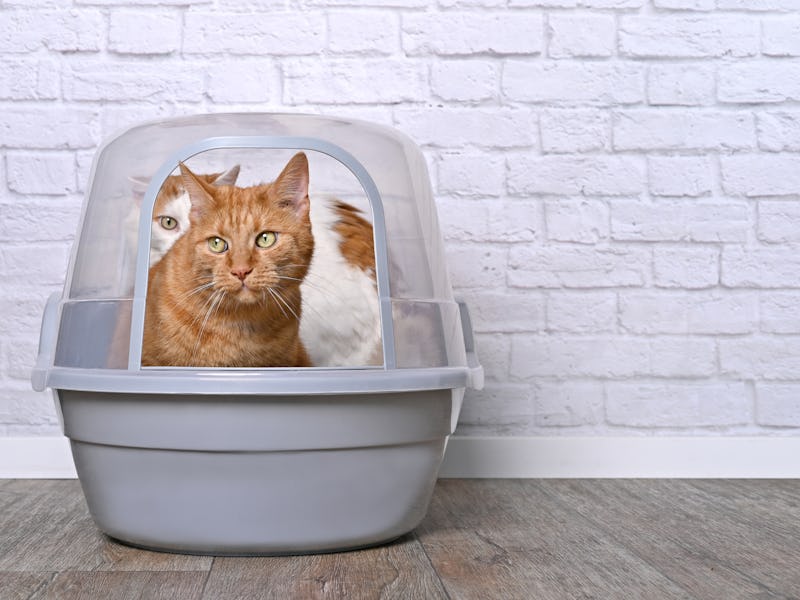How Many Litter Boxes Does My Cat Need? This Simple Math Problem Will Tell You
Litter boxes = n+1, where n = number of cats.

Anyone can grasp the n+1 formula when it comes to cats and litter boxes. Commonly known among veterinarians and cat trainers, this rule of thumb dictates how many litter boxes cat parents ought to keep in their home. The equation is simple: n is the number of cats you have and the end result is the number of litter boxes you should have in your home.
Under this guidance, even if you have just one cat, two litter boxes is ideal. But is that really necessary?
“You generally want to make sure that cats have a lot of options when it comes to their litter boxes,” Kaitlyn Krebs, a veterinarian and assistant professor of clinical primary care at the University of Pennsylvania School of Veterinary Medicine, tells Inverse. By options, she means variety when it comes to box and litter type. And as we all know, cats can be picky.
Even more than picky, Krebs says cats are territorial creatures, and many of their behaviors revolve around marking their territory. Cats use scratching, rubbing, peeing, and pooping as ways to claim their own spaces. Even a single cat has to share their space with other humans. A litter box is more than a way to relieve themselves: It’s a space for them to mark what’s theirs. Having more than one litter box can be a crucial way to let your cat claim its personal space.
In a multi-cat household, the n+1 rule can help ease tension between kitties. Cats might practice a behavior Krebs calls litter-box guarding, in which they actively protect a litter box and prevent other cats from using it. This guarding can foment fighting among cats, and can even make some kitties too scared to do their business, causing potential health problems. The n+1 principle ensures everyone gets their own territory.
But more than one litter box, let alone as many as five, simply doesn’t fit in some homes. Krebs recognizes that not everyone can abide by this rule. “It's always ideal to have n+1, but it's not always feasible,” she says.
She assures that having just one litter box isn’t an egregious offense. But if you do have just one, then you should make sure that litter box is in the best possible condition when it comes to cleanliness and location.
“I think the biggest thing is, if you do only have one litter box, just making sure that is a place they want to go,” Krebs says. Scooping daily and regularly changing the litter are musts, as is a quiet spot with a clear eye line. Krebs says cats like to have a good view while going potty to make sure nobody, be it a predator or the family dog, ambushes them. Tranquility is important too; you don’t want a litter box right next to an air conditioning unit that might unexpectedly roar on while your cat is doing its business.
When it comes to a multi-cat household, Krebs still recommends having one litter box per cat. “I think if you have a multi cat household where everybody gets along, then that's probably an ideal scenario where you're able to have perhaps one litter box per cat instead of n+1,” she says.
If your cat poops or pees frequently outside the litter box, Krebs first recommends taking your cat to the vet. If your kitty is healthy and the problem persists, then you might want to consider adding another box.
“It really does help to minimize the inappropriate eliminations that we can sometimes see even in single cat households,” Krebs says.